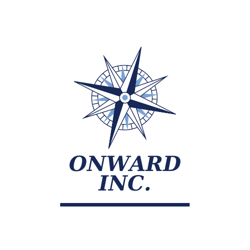Fueling Success: Exploring the Best Marketing Tools for Oil and Gas Companies
In today's hypercompetitive business landscape, effective marketing plays a pivotal role in the success of any industry, including oil and gas. As the oil and gas sector continues to evolve, it is essential for companies to leverage the right marketing tools to reach their target audience, build brand awareness, and drive business growth. In this blog, we explore the best marketing tools for oil and gas companies, enabling them to navigate the digital age and stay ahead of the competition.
-
Content Marketing:
Content marketing is a powerful tool for engaging and educating target audiences. For oil and gas companies, producing high-quality content that is informative, relevant, and valuable is crucial. Creating blog posts, articles, whitepapers, and case studies can establish a company as a thought leader in the industry while providing insights and solutions to common challenges. Additionally, leveraging visual content such as infographics and videos can enhance engagement and drive brand awareness across digital platforms.
-
Search Engine Optimization (SEO):
In an increasingly digital world, a robust online presence is vital for oil and gas companies. Implementing effective search engine optimization strategies can help improve organic visibility in search engine results. Optimizing website content, conducting keyword research, and implementing technical SEO best practices can increase organic traffic, attract qualified leads, and enhance brand visibility within the industry.
-
Social Media Marketing:
Harnessing the power of social media platforms is essential for reaching a wide audience and establishing brand credibility. Oil and gas companies can leverage social media platforms like LinkedIn, Twitter, and Facebook to share industry insights, company news, and thought leadership content. Engaging with the audience through interactive posts, responding to comments, and participating in industry discussions can foster relationships, enhance brand reputation, and generate leads.
-
Email Marketing:
Email marketing remains one of the most effective direct communication channels for oil and gas companies. By building a targeted email list, companies can provide personalized content, industry updates, and exclusive offers to their subscribers. Email marketing campaigns can drive engagement, nurture leads, and facilitate customer retention. Leveraging marketing automation tools can help streamline email campaigns and deliver personalized content based on customer behavior, preferences, and interests.
-
Pay-Per-Click (PPC) Advertising:
Pay-per-click advertising enables oil and gas companies to reach a highly targeted audience through search engines and social media platforms. By bidding on relevant keywords and demographics, companies can position themselves prominently in search engine results or display ads to their target audience. PPC campaigns can drive website traffic, increase lead generation, and boost brand recognition, all while providing measurable metrics to evaluate campaign success.
-
Thought Leadership and Industry Events:
Participating in industry events, conferences, and webinars allows oil and gas companies to showcase their expertise, build credibility, and network with industry professionals. Establishing thought leadership through speaking engagements, panel discussions, and whitepapers can position a company as an authority in the field, attracting potential customers and partners.
Conclusion...
Marketing tools are essential for oil and gas companies to thrive in the digital age. By strategically leveraging content marketing, search engine optimization, social media marketing, email marketing, pay-per-click advertising, and thought leadership initiatives, companies can increase brand visibility, engage their target audience, and drive business growth. It is pertinent for oil and gas companies to continually adapt their marketing strategies, embracing the evolving digital landscape, and staying ahead of competitors to maintain a competitive edge in the industry.



